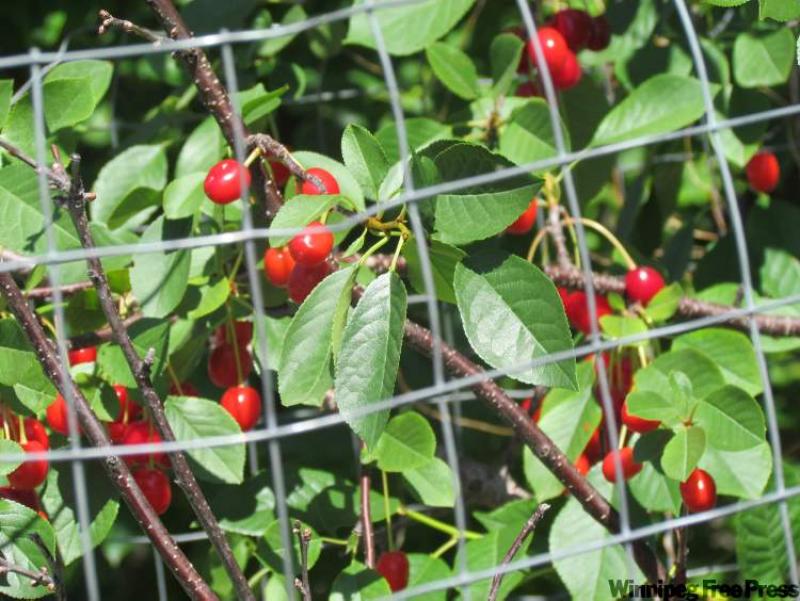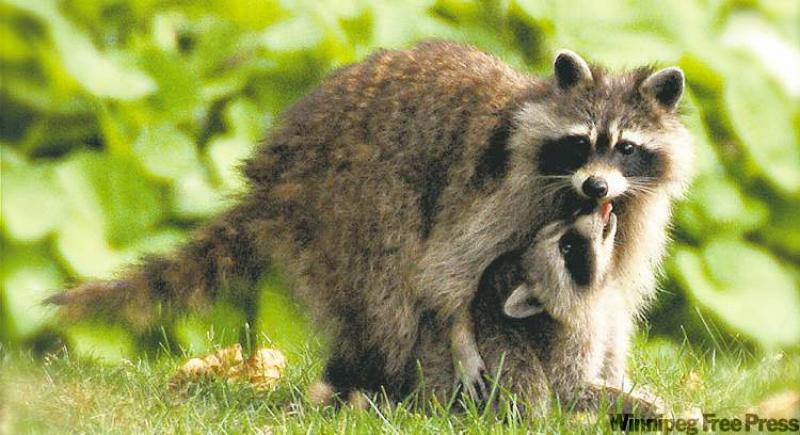


Dealing with wily critters
AT one point this summer I counted five rabbits in my front flower bed. A family of rabbits have made their home under the deck in my backyard. Each evening I chase them in circles hoping to send them into my neighbour's yard. Alas, my neighbour doesn't have a garden and there is simply no fooling these wily critters. There are many non-toxic products on the market including Planskyyd and Skoot which pledge to discourage deer, rabbits and raccoons from devouring flowers and vegetables. Home remedies abound but does anything actually work to deter these beautiful, multiplying creatures? In today's article, Sarah Coulber makes some unique suggestions.
The weather has been hot, hot, hot and I've been assessing which annuals and perennials have proven themselves to be true performers. Email me at colleen.zacharias@gardensmanitoba.com with the names of your hardiest performers and I will share them in a future column.
Next week, Jeannette Adams, Master Gardener, discusses the role that beneficial insects play in our gardens as well as the importance of not being too overzealous when doing your fall clean-up.
-- Colleen Zacharias
Whether your garden is formal or whimsical, whether your space is for entertaining, children playing or a personal sanctuary, we all have something in common: We express a little of ourselves through this space and we get satisfaction seeing it unfold as we wish.
The thing is, our natural world is a lot like our own selves -- it's dynamic. It never stays the same. We need to address weeds with mulch and overgrown plants with dividing. And what about those wild neighbours who share our space with us? The ones that sing those pretty songs or look at us with those beautiful wild eyes are part of this web of life and have needs of their own.
So, when you next have to deal with an animal that is interfering with your idea of perfection, have a good sigh and before you take action (or get more stressed and compromise your health), remember that pollinators like bees, butterflies, beetles and even wasps contribute to an estimated 1/3 of our world's food supply. Birds, bats, toads and snakes help to keep our insect species in check. They all affect the food chain and ultimately the quality of our life, even the rabbits, raccoons and deer which can be a big challenge to many of us.
That said, here are some things you can try to keep their damage to a minimum. Whatever you do, keep in mind the animal's habits for clues to keep them at bay.
For instance, many have served as food for wolves, who were here before man spread far and wide. So, some gardeners find that their dogs are a natural repellant. Of course, if you don't own a dog, you could visit your local dog groomers for a bag of free fur. Place where needed, prioritizing which beds need the most protection. To further divert these animals, consider keeping a corner of your garden wild and repellant-free.
In the fall, you may wish to wrap burlap around your young trees and shrubs to survive both the harsh winter temperatures and keep the deer, rabbits and hares from browsing. In the summer, you may find it necessary to put a cage of chicken wire around the plant, until it gets big enough to withstand some annual chomping.
You may prefer to spray certain bed borders or the plants themselves with safe remedies that are thought to turn the nose of passing wildlife, reapplying after rain. For instance, bloodmeal can repel deer and rabbits, but this can sometimes attract meat-loving creatures. Or, try a garlic-egg mixture. The smell soon lessens for human noses but continues to be strong for wild visitors. Spray around plants or clip or tie up soaked cloths. If you want to be more visually discreet, cover with a piece of wood. This mixture seems to be doing the trick in Canadian Wildlife Federation's Wildlife-Friendly Demonstration Gardens.
And then there's an old-fashioned solution that many farmers and gardeners alike have found successful. But before I share this secret with you, I must first give an advisory, as some people I've shared this with immediately turn their noses up in disgust. Okay, ready? Human urine. It's safe, it's free and it seems to work. I don't know a whole lot on the topic, as it's not a commonly talked about remedy, but I suspect it should be diluted to a weak solution to keep the smell down for ourselves and keep it safe and beneficial to the plants. The only down side I've heard from one person who used it is that it can, in time, become less effective.
Here at CWF headquarters, we have all sorts of animal residents and some small shrubs have been caged to help them get established. In general, however, with our great diversity of plants, most browsing is overshadowed by all the remaining colour and texture.
There are times, however, when 'Fort Knox' is needed and a fence that matches both your budget and visual preference. The vegetable garden in my backyard, for instance, has an old fence of cedar posts and chicken wire. This year the deer decided to practise their jumping skills in search of my tomatoes and collards and so, as I hadn't time to experiment with the egg-garlic recipe yet, I spent an evening raising the fence height, tacking on a few thin posts and connecting with string.
Raccoons are another matter. I've heard of people successfully keeping raccoons away from their garden veggies by placing sweaty clothes around their crop. We can also keep their feeding to a minimum by securing garbage bin lids and putting a heavy stone on compost bins. Also, consider feeding the birds from only late autumn to early spring, when natural food sources of seeds and berries and bugs are less available. If you find that raccoons are wakeful during this time, it is likely temporary, but consider bringing in feeders at dusk to prevent night-time munching.
There will always be variability with each area, each year and each animal so experiment, try to be tolerant and you will find your own balance with nature.
Sarah Coulber is the Backyard Habitat Program Coordinator with the Canadian Wildlife Federation, helping Canadians enjoy, protect and live in harmony with nature.
Home Recipes
Organic Rabbit Repellent
1 tbsp. sugar
1 tbsp. cooking oil
4 raw eggs
9 drops of clove oil (available at local pharmacies)
4 liters of water
Blend and spray on plants and ground. Repeat after heavy rain.
Garlic and Egg Recipe
May discourage both deer and rabbits!
2 cloves garlic
1 egg
1 cup water
Blend/mix together and apply around plant. You can also soak small rags and attach to branches or fences.
Deer Juice
Recipe provided by Rosemary Goodman. Guaranteed to not attract deer!
2 raw eggs
2 cloves garlic- finely chopped
2 tsp Hot Sauce eg. tabasco
2 tsp Cayenne pepper
2 cups water
Puree together, let sit for two days- store in fridge. Use paintbrush to apply to plants.




